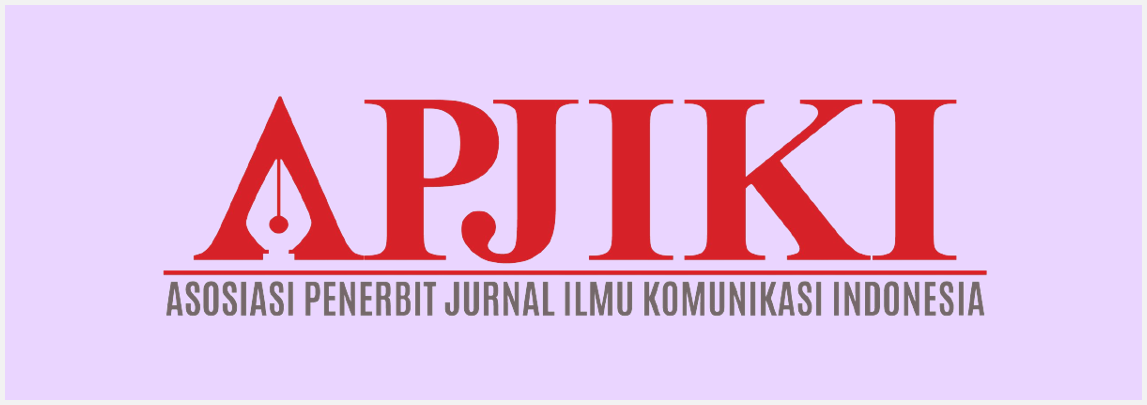The Impacts of Communication in Transformational Leadership and ICT on Customer Satisfaction in the Educational Sector
Abstract
Keywords
Full Text:
PDFReferences
Achrol, R. S., & Kotler, P. (2012). Frontiers of the marketing paradigm in the third millennium. 35–52. https://doi.org/10.1007/s11747-011-0255-4
Andriani, S., Kesumawati, N., & Kristiawan, M. (2018). The influence of the transformational leadership and work motivation on teachers performance. International Journal of Scientific and Technology Research, 7(7).
Arambewela, R., & Hall, J. (2009). An empirical model of international student satisfaction. Asia Pacific Journal of Marketing and Logistics, 21, 555–569. https://doi.org/10.1108/13555850910997599
Avdjieva, M., & Wilson, M. (2002). Exploring the development of quality in higher education. Managing Service Quality, 12, 372–383. https://doi.org/10.1108/09604520210451858
Awan, U., Kraslawski, A., & Huiskonen, J. (2018). The Effects of an Ambidextrous Leadership on the Relationship between Governance Mechanism and Social Sustainability. Procedia - Social and Behavioral Sciences, 238, 398–407. https://doi.org/10.1016/j.sbspro.2018.04.017
Banwet, D., & Datta, B. (2003). A study of the effect of perceived lecture quality on post-lecture intentions. Work Study, 52(2), 234–243. https://doi.org/10.1108/00438020310485967
Barnes, B. R. (2007). Analysing Service Quality: The Case of Post-Graduate Chinese Students. Total Quality Management & Business Excellence, 18(3), 313–331. https://doi.org/10.1080/14783360601152558
Bass, Bernard, M. (1985). Leadership and Performance Beyond Expectation. New York: Academic Press.
Bass & Riggio. (2006). Transformational Leadership. New Jersey: Lawrence Erlbaum Associates, Inc.
Beerli Palacio, A., Díaz Meneses, G., & Pérez Pérez, P. J. (2002). The configuration of the university image and its relationship with the satisfaction of students. Journal of Educational Administration, 40(5), 486–505. https://doi.org/10.1108/09578230210440311
Boddy, C. R. (2014). Corporate Psychopaths, Conflict, Employee Affective Well-Being and Counterproductive Work Behaviour. Journal of Business Ethics, 121(1), 107–121. https://doi.org/10.1007/s10551-013-1688-0
Breevaart, K., Bakker, A., Hetland, J., Demerouti, E., Olsen, O. K., & Espevik, R. (2013). Daily transactional and transformational leadership and daily employee engagement. Journal of Occupational and Organizational Psychology, 87(1), 138–157. https://doi.org/10.1111/joop.12041
Buil, I., Martínez, E., & Matute, J. (2019). Transformational leadership and employee performance: The role of identification, engagement and proactive personality. International Journal of Hospitality Management, 77. https://doi.org/10.1016/j.ijhm.2018.06.014
Burke, R. J. (2017). Toxic Leaders: Exploring the Dark Side. XX(1), 0.
Burns, J. M. G. (1978). Leadership. Harper & Row.
Carnoy, M. (2005). ICT in Education: Possibilities and Challenges. Inaugural Lecture of the 2004-2005 Academic Year, (October 2004), 17.
Caskurlu, S., Maeda, Y., Richardson, J. C., & Lv, J. (2020). A meta-analysis addressing the relationship between teaching presence and students ’ satisfaction and learning. Computers & Education, 157(September 2019), 103966. https://doi.org/10.1016/j.compedu.2020.103966
Cevere, R., & Gailums, A. (2017). Information Technology Sustainability Problems and Possible Solutions. Baltic Journal of Modern Computing, 5(1), 1–23. https://doi.org/10.22364/bjmc.2017.5.1.01
Chang, S. C., & Tung, F. C. (2008). An empirical investigation of students’ behavioural intentions to use the online learning course websites. British Journal of Educational Technology, 39(1), 71–83. https://doi.org/10.1111/j.1467-8535.2007.00742.x
Clayson, D. E., & Haley, D. A. (2005). Marketing Models in Education: Students as Customers, Products, or Partners. Marketing Education Review, 15(1), 1–10. https://doi.org/10.1080/10528008.2005.11488884
Cronin, J. J., & Taylor, S. A. (1994). Servperf versus Servqual: Reconciling Performance-Based and Perceptions-Minus-Expectations Measurement of Service Quality. Journal of Marketing, 58(1), 125–131. https://doi.org/10.1177/002224299405800110
Cross, R., Edmonson, A., & Murphy, W. (2019). A noble purpose alone won’t transform your company: the leadership behaviors that nurture collaboration. MIT Sloan Management Review, 61(2), 37–43. Retrieved from https://twitter.com/mitsmr/status/1218522433189269506/photo/1
Cunningham, L. F., Young, C. E., & Gerlach, J. (2009). A comparison of consumer views of traditional services and self-service technologies. Journal of Services Marketing, 23(1), 11–23. https://doi.org/10.1108/08876040910933057
De Marez, L., & Verleye, G. (2004). Innovation diffusion: The need for more accurate consumer insight. Journal of Targeting, Measurement and Analysis for Marketing, 13(1), 32–49. https://doi.org/10.1057/palgrave.jt.5740130
Egri, C. P., & Herman, S. (2000). Leadership in the North American Environmental Sector : Academy of Management Executive, 43(4), 571–604. https://doi.org/10.2307/1556356
Ekinci, Y., Dawes, P. L., & Massey, G. R. (2008). An extended model of the antecedents and consequences of consumer satisfaction for hospitality services. In European Journal of Marketing (Vol. 42). https://doi.org/10.1108/03090560810840907
Elliott, K. M., & Shin, D. (2002). Student Satisfaction: An alternative approach to assessing this important concept. Journal of Higher Education Policy and Management, 24(2), 197–209. https://doi.org/10.1080/1360080022000013518
Fassinger, R. E., Shullman, S. L., & Buki, L. P. (2017). Future Shock : Counseling Psychology in a VUCA World. The Counseling Psychologist, 45(7), 1048–1058. https://doi.org/10.1177/0011000017744645
Fuchs, C. (2008). The implications of new information and communication technologies for sustainability. Environment, Development and Sustainability, 10(3), 291–309. https://doi.org/10.1007/s10668-006-9065-0
Giebelhausen, M., Robinson, S. G., Sirianni, N. J., & Brady, M. K. (2014). Touch Versus Tech: When technology functions as a barrier or a benefit to service encounters. Journal of Marketing, 78(4), 113–124. https://doi.org/10.1509/jm.13.0056
Hasan, H. F. A., Ilias, A., Rahman, R. A., & Razak, M. Z. A. (2008). Service Quality and Student Satisfaction: A Case Study at Private Higher Education Institutions. International Business Research, 1(3), 163–175.
Helgesen, U., & Nesset, E. (2007). What accounts for students’ loyalty? Some field study evidence. International Journal of Educational Management, 21, 126–143. https://doi.org/10.1108/09513540710729926
Hemsworth, D., Muterera, J., & Baregheh, a. (2013). Examining Bass ’ s Transformational Leadership In Public Sector Executives : The Journal of Applied Business Research, 29(3).
Hermans, R., Tondeur, J., van Braak, J., & Valcke, M. (2008). The impact of primary school teachers’ educational beliefs on the classroom use of computers. Computers and Education, 51(4), 1499–1509. https://doi.org/10.1016/j.compedu.2008.02.001
Ijaz, A., Irfan, S., Shahbaz, S., Awan, M., & Sabir, M. (2011). An empirical model of student satisfaction: Case of Pakistani public sector business schools. Journal of Quality and Technology Management, 7(2), 91–114.
Jayawardhena, C. (2010). The impact of service encounter quality in service evaluation: Evidence from a business-to-business context. Journal of Business and Industrial Marketing, 25(5), 338–348. https://doi.org/10.1108/08858621011058106
Jörling, M., Böhm, R., & Paluch, S. (2019). Service Robots: Drivers of Perceived Responsibility for Service Outcomes. Journal of Service Research, 22(4), 404–420. https://doi.org/10.1177/1094670519842334
Kumar, R. (2008). Convergence-Ict. World Academy of Science, Engineering and Technology, 40, 556–559.
Lai, F. Y., Tang, H. C., Lu, S. C., Lee, Y. C., & Lin, C. C. (2020). Transformational Leadership and Job Performance: The Mediating Role of Work Engagement. SAGE Open, 10(1). https://doi.org/10.1177/2158244019899085
Lau Chin, J. (2011). Women and leadership: Transforming visions and current contexts. Forum on Public Policy Online, 2, 1–12.
Lin & Hsiao. (2014). The Relationships between Transformational Leadership, Knowledge Sharing, Trust and Organizational Citizenship Behavior. International Journal of Innovation, Management and Technology, 5(3), 171–174. https://doi.org/10.7763/IJIMT.2014.V5.508
Makarem, S. C., Mudambi, S. M., & Podoshen, J. S. (2009). Satisfaction in technology-enabled service encounters. Journal of Services Marketing, 23(3), 134–144. https://doi.org/10.1108/08876040910955143
Marzo, M., Iglesias, M., & Rivera, P. (2005). Measuring customer satisfaction in summer courses. Quality Assurance in Education, 13, 53–65. https://doi.org/10.1108/09684880510578650
Mavondo, F. T., Tsarenko, Y., & Gabbott, M. (2004). International and Local Student Satisfaction: Resources and Capabilities Perspective. Journal of Marketing for Higher Education, 14(1), 41–60. https://doi.org/10.1300/J050v14n01_03
Mccraven, W. (2015). Leading in a complex world. Bridge Leadership: Connecting Educational Leadership and Social Justice to Improve Schools., (November), 3–7. Retrieved from https://search.ebscohost.com/login.aspx?direct=true&AuthType=ip,shib&db=psyh&AN=2010-02318-005&site=ehost-live&scope=site&custid=gsu1
McLeod, M., & Wainwright, P. (2008). Researching the Study Abroad Experience. Journal of Studies in International Education, 13(1), 66–71. https://doi.org/10.1177/1028315308317219
Morriss, A., & Frei, F. X. (2012). Uncommon Service: How to Win by Putting Customers at the Core of Your Business. Harvard Business School Press Books, 95(9781422133316), 1. Retrieved from http://search.ebscohost.com/login.aspx?direct=true&db=bth&AN=79657752&site=ehost-live%5Cnhttp://hbr.org/product/a/an/14830-HBK-ENG
Nonaka, I., & Takeuchi, H. (2011). The Wise Leader. Harvard Business Review, 89(5).
O’Keeffe, P. (2013). A Sense of Belonging: Improving Student Retention. College Student Journal, 47(4).
Orr, G. (2003). Review Diffusion of Innovations, by Everett Rogers (1995). Stanford University, (1995), 5. https://doi.org/10.1525/aa.1963.65.5.02a00230
Petruzzellis, L., D’Uggento, A. M., & Romanazzi, S. (2006). Student satisfaction and quality of service in Italian universities. Managing Service Quality, 16(4), 349–364. https://doi.org/10.1108/09604520610675694
Richardson, J. T. E. (2005). Instruments for obtaining student feedback: A review of the literature. Assessment and Evaluation in Higher Education, 30(4), 387–415. https://doi.org/10.1080/02602930500099193
Rodriguez Casal, C. (2007). ICT for education and development. In Info (Vol. 9). https://doi.org/10.1108/14636690710762093
Rueda, L., Benitez, J., & Braojos, J. (2017). From traditional education technologies to student satisfaction in Management education : A theory of the role of social media applications. Information & Management, 54(8), 1059–1071. https://doi.org/10.1016/j.im.2017.06.002
Teeroovengadum, V., Kamalanabhan, T. J., & Seebaluck, A. K. (2016). Measuring service quality in higher education: Development of a hierarchical model (HESQUAL). Quality Assurance in Education, 24(2), 244–258. https://doi.org/10.1108/QAE-06-2014-0028
Tepper, B. J. (1993). Patterns of Downward Influence and Follower Conformity in Transactional and Transformational Leadership. Academy of Management Proceedings, 1993(1), 267–271. https://doi.org/10.5465/ambpp.1993.10317021
Vargas-Sanchez, A., & Perano, M. (2021). What leads guests to satisfaction and loyalty in UAE five-star hotels? AHP Analysis to service quality dimensions. Englightening Tourism. A Pathmaking Journal, 11(1), 102–135.
Weerasinghe, I. S., Lalitha, R., & Fernando, S. (2017). Students’ satisfaction in higher education literature review. American Journal of Educational Research, 5(5), 533–539. https://doi.org/10.12691/education-5-5-9
Zhang, Y., Waldman, D. A., Han, Y. L., & Li, X. B. (2015). Paradoxical leader behaviors in people management: Antecedents and consequences. Academy of Management Journal, 58(2), 538–566. https://doi.org/10.5465/amj.2012.0995
DOI: https://doi.org/10.36914/jikb.v8i1.859
Refbacks
- There are currently no refbacks.
Copyright (c) 2022 Jurnal Ilmu Komunikasi dan Bisnis
Publisher: Sekolah Tinggi Ilmu Komunikasi dan Sekretari Tarakanita Copyright








